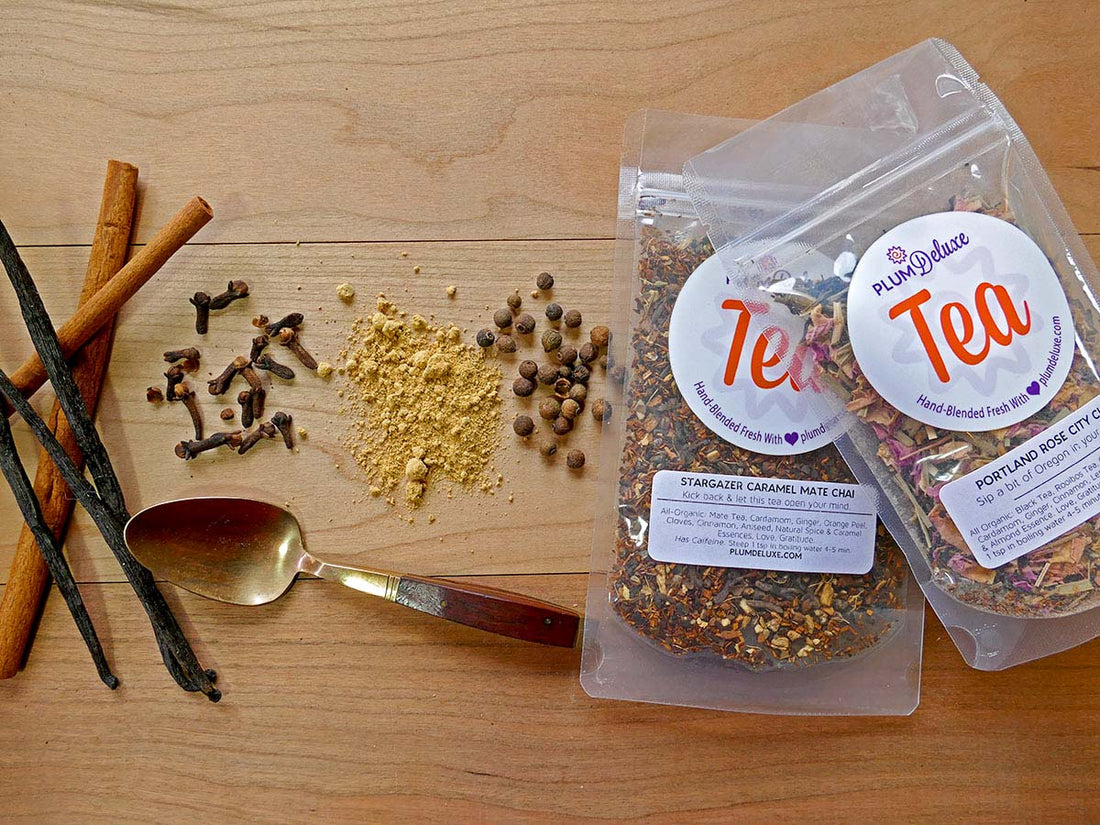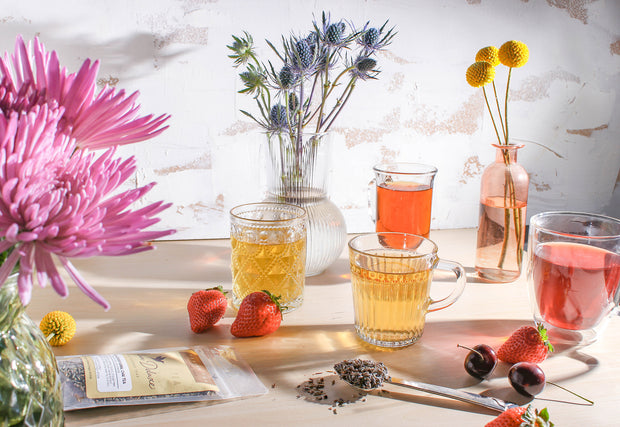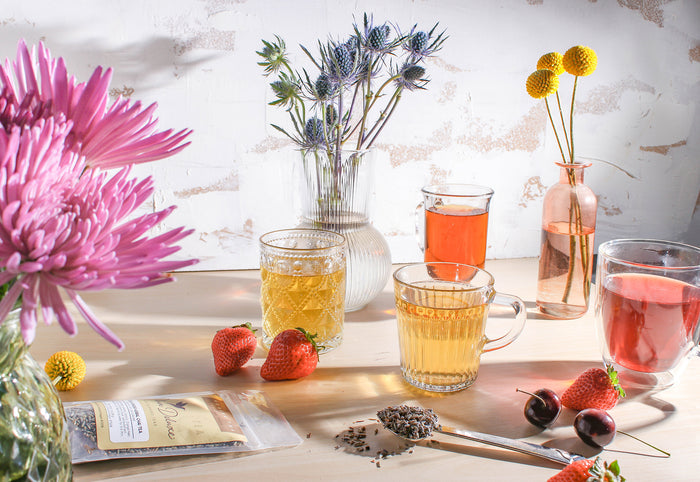Tea lovers concerned about caffeine consumption want to know how much caffeine is in chai tea.
Yeah, yeah, “chai” means “tea” and to use the terms together is like saying “ATM machine.” I know. However, when I use “chai” all by itself, I’m still using it wrong because I’m referring to masala chai, which is spiced tea. I never use “chai” to mean plain old tea.
According to one etymology dictionary, “chai” comes from the Mandarin “ch'a,” which means "tea,” but when the tea was introduced to English speakers, it was introduced as “chai tea.” So there. There is precedence for using the two terms together.
That’s my story, and I’m stickin’ with it.

What is Chai Tea?
Before we get to the caffeine issue, we need to talk about what chai tea is. Originating in India, traditional chai tea is a decoction of spices and black tea leaves. The spices vary but often include green cardamom pods, cinnamon sticks, cloves, ginger, and black peppercorn. Other spices that might show up in chai tea are star anise, fennel, allspice, cumin, coriander, mace, and vanilla.
In addition to varying spices, the base of chai teas now varies, as well. Blends might use black, oolong, or green tea leaves, or perhaps rooibos, honeybush, or something else. Clever tea blenders have gotten creative.
The spiced tea—whatever it is made from—is often served sweetened with sugar or honey and mixed with warmed milk. Sometimes, because of the milk, this beverage is called “chai latte.”

The Caffeine in Chai Tea
Caffeine is an alkaloid that occurs naturally in about 60 plant species, including cocoa beans, kola nuts, tea leaves, and coffee beans. In chai tea, it is the tea base—be it black tea, oolong, green, or white—that gives the beverage caffeine. Remember, rooibos and honeybush are caffeine-free bases often used in herbal teas.
The amount of caffeine varies, depending on the quantity and quality of tea leaves used, how they are processed before they get to you, and the time and temperature you use to steep them. We’re talking variables on top of variables. It’s impossible to find an absolute answer in a pile of variables.
Oftentimes, the caffeine content is listed as a range. For instance, black tea contains 90 mg of caffeine, and green tea contains 50 mg of caffeine. You can see a breakdown of these ranges here.
Because chai tea is a blend of tea leaves and spices—sometimes a significant quantity of spices—a teaspoon of the stuff will contain fewer tea leaves than, say, a teaspoon of straight-up Assam tea, which is the traditional base. Fewer tea leaves means less caffeine.

So How Much Caffeine is in Chai Tea?
Unless you have the means and desire to test each cup of chai tea you brew, you’re not going to know for certain how much caffeine is in a particular cup. But you want an answer nonetheless, right? Well, I go with an estimate of 50 mg of caffeine per 8-oz cup of chai tea. The Caffeine Content Hub agrees. As caffeinated beverages go, chai tea is considered a moderate caffeine source.
However, in addition to having caffeine, chai tea made with a real-tea (Camellia sinensis) base contains L-theanine, a non-essential amino acid that can act as a natural stress-reliever. Somehow, the pick-me-up aspect of caffeine and the calm-me-down aspect of theanine complement each other, allowing many tea lovers to enjoy the benefit of increased alertness without the detriment of jitters or amped-up anxiety.
I think the takeaway is this: Whether you’re just curious or you need to know for health reasons, how much caffeine is in chai tea depends on whether or not the base is black, oolong, green, or white tea. If it is, then you can be certain there is some amount of caffeine.

Chai This!
Warm, aromatic chai tea is one of my winter favorites. I brew a strong batch (heavy on the caffeine, as a result), add more spices and some honey or maple syrup, and keep it in the fridge. I blend this 50/50 with warm milk for afternoon tea.
I’ve also used my chai concentrate to make oatmeal, rice, waffles, and more. Which reminds me . . . one of my favorite articles from the Plum Deluxe archives is Ciaran’s 18 Places to Stick Your Chai. This winter, I’m all over that Pumpkin Chai Chili idea. Let the experimenting begin!

![Spring Break Tea Variety Pack [6-Pack Variety of Flavors]](http://www.plumdeluxe.com/cdn/shop/files/spring-break-pack.jpg?v=1740682266&width=165)















